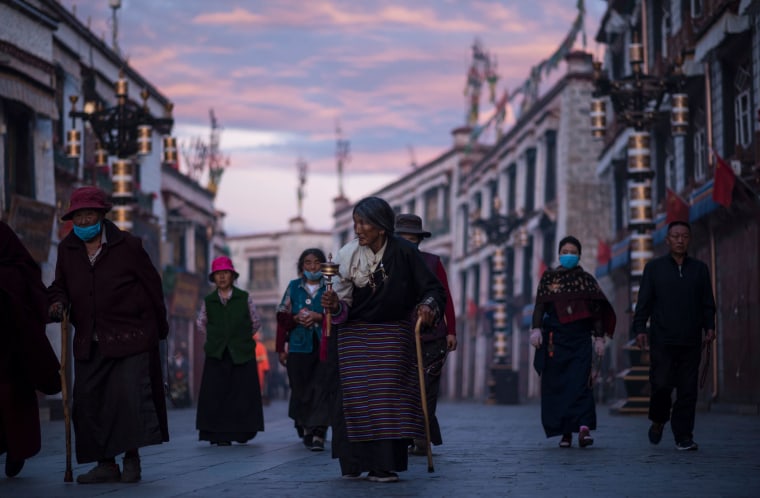LHASA, China — China is pouring billions of dollars into Tibet as Beijing seeks to cement its control before the succession struggle that is likely to follow the death of the Dalai Lama.
During a rare Chinese government-organized visit to the region, local officials described a development program that they contend will bring prosperity to the 3.3 million Tibetans who inhabit a vast area roughly double the size of Texas.
The massive infrastructure projects include new airports and highways that cut through the world’s highest mountains, with planned investment totaling $97 billion.
The investment plan aims to protect Tibetan Buddhism's holy sites while building a sustainable “green economy" that safeguards the fragile environment that is an average elevation of 13,000 feet above sea level.
According to official figures, China has also already spent over $450 million renovating Tibet’s major monasteries and other religious sites since the 1980s. An additional $290 million has been budgeted for the next five years.
The huge investment by China comes as the officially atheist country increasingly tries to enhance its image by casting itself as the largest nation of Buddhist believers. China claims some 300 million Buddhists of various schools, of which Tibetan Buddhism is one.
The effort comes as China faces charges from rights groups and exiles of repressing the Tibetan people. China has ruled Tibet with an iron fist since 1951, a year after its troops marched in.
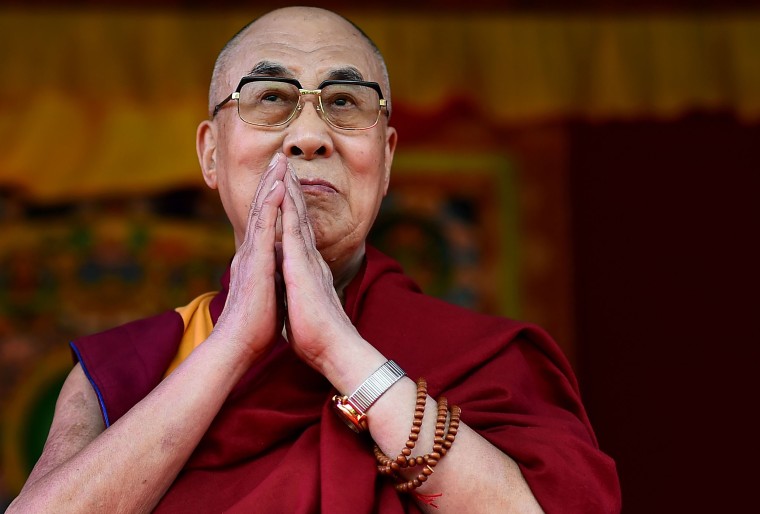
Last month, Vice President Mike Pence said Tibet's people "have been brutally repressed by the Chinese government." And in June, the U.N. High Commissioner for Human Rights said conditions were "fast deteriorating" in Tibet.
Beijing routinely denies charges of repression, saying that its rule ended serfdom and brought prosperity to what was a backward region, and that it fully respects the rights of the Tibetan people.
It insists Tibet has historically been part of its territory since the mid-13th century. Many Tibetans, though, say the region has been effectively independent for most of its history.
While Beijing regards the Dalai Lama as a dangerous separatist who seeks to split off nearly a quarter of the land mass of the People's Republic of China, the Nobel Peace Prize-winning Tibetan spiritual leader says he only seeks greater rights for Tibetans, including religious freedom and autonomy.
Reincarnation
For supporters of the Dalai Lama, China’s Tibet strategy is “aimed at increasing its control and limiting the personal freedom of the Tibetan people,” said Matteo Mecacci, a former lawmaker in Italy and president of the International Campaign for Tibet.
He called the infrastructure improvements and monastery renovations “superficial.”
Mecacci said Tibetans are “not even allowed to receive teachings from the Dalai Lama.”
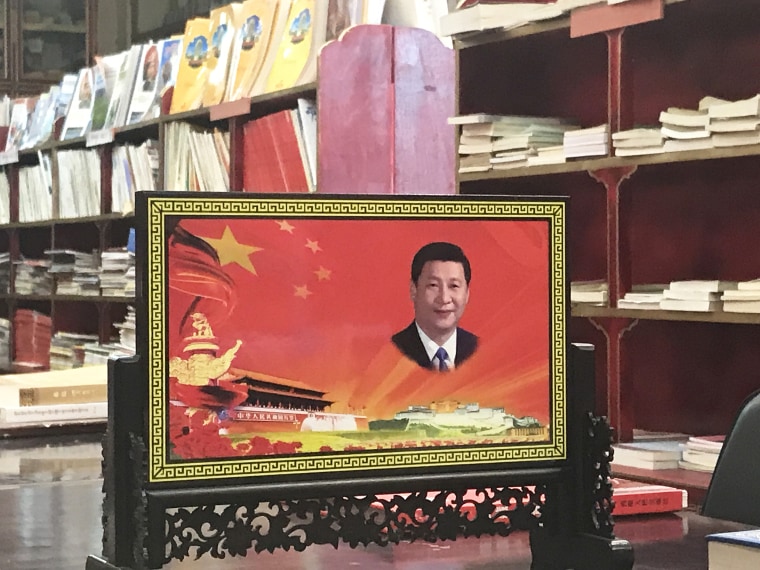
He added, “When it comes to the real practice of Buddhism, China continues to increase restrictions.”
With the Dalai Lama now 83, many Tibetans fear that China will use the succession issue to split Tibetan Buddhism, with a new Dalai Lama named by exiles and another by the government after his death.
(Barry Kerzin, an American monk and the Dalai Lama’s personal physician, told NBC News that he is “perfectly fit.")
The Dalai Lama, who fled Tibet and went into exile in India in 1959, has repeatedly tussled with China's ruling Communist Party over who has final authority on the issue of reincarnation.
"The Tibetans and the Han Chinese are like lips and teeth, we are linked by blood."
Tibetan Buddhism holds that the soul of a senior lama is reincarnated in the body of a child on his death.
China says it must approve the next Dalai Lama, and the Dalai Lama has said his biggest concern is that China will try to name his successor.
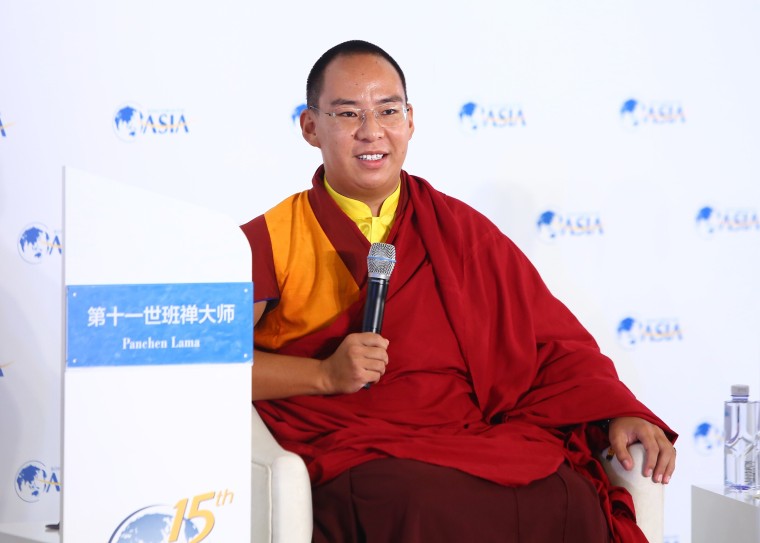
In 1995, after the Dalai Lama named a boy in Tibet as the reincarnation of the previous Panchen Lama, the second-highest figure in Tibetan Buddhism, China put the boy under house arrest and installed another instead.
Many Tibetans are torn between accepting and spurning the Chinese-appointed Panchen Lama.
Palaces and shrines
Explaining the seeming contradictions in China’s policy, Tibet’s foreign affairs deputy chief, Ma Qiang, said that while the Community Party "doesn’t believe in religion," China's government was "duty-bound to protect Tibetan Buddhism and restore and preserve its holy sites because that is also what the Tibetan people want so they can exercise their freedom of worship.”
The most iconic landmark to receive Chinese funding is the imposing Potala Palace, the thousand-room residence that overlooks Lhasa. It houses the tombs of all but one of the Dalai Lamas who have died since 1682.
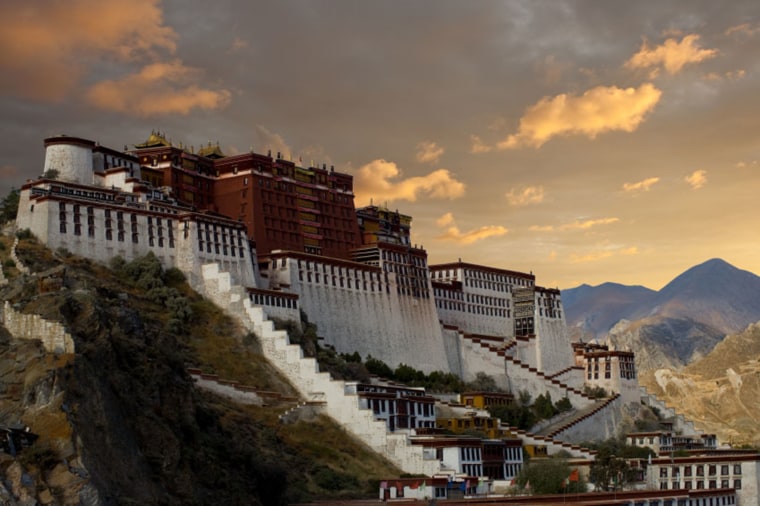
According to the museum's deputy director, Gonga Zhaxi, the 13-story palace has undergone two major renovations on which Beijing spent $37 million. Another $4.4 million has been budgeted for the repair of its ornate golden roofs.
To protect its priceless Buddha statues, frescoes and scriptures, a limit has been set of 5,000 pilgrims and tourists per day, and cats have been deployed against the colony of rats, he said.
Other sites that have benefited from Chinese cash include:
- The seventh-century Jokhang Temple is Tibet’s holiest shrine as it houses a life-sized statue of Buddha (Jowo Shakyamuni) at the age of 12. The labyrinth of chapels thick with the smoke of incense and prayer candles is visited daily by around 12,000 pilgrims and tourists. Buddha’s statue was the gift of the Chinese Tang dynasty Princess Wencheng when she married Tibetan King Songtsan Gambo around 1,300 years ago. The union is now immortalized in a spectacular open-air opera with a cast of 800. A private production company has invested more than $80 million to promote this narrative of Tibet-China unity. Lhagba, a prominent monk and the site's management director, said Beijing has spent $14.7 million on major repairs there in the past 10 years.
- Beijing has also helped with major renovations at Drepung Monastery and Sera Monastery, two of Tibet’s most influential Buddhist academies, with grants of $30 million and $8 million. Thanks to government help, the monks can focus on their studies and need not bother with the monastery’s repairs, according to Awang Ciren, the monastery’s academic head. To increase its enrollment of 480 monks, Beijing is building a new dormitory that can accommodate 170 monks, he added.
In addition, 46,000 monks and nuns are now covered by health insurance and social security, officials said.
And with Beijing’s “preferential” policy and massive budget subsidies, Tibet’s economy has been growing faster than the rest of China.
Some $170 million was spent on environmental projects last year, part of a 23-year plan unveiled in 2009 that's worth $2 billion.
“In Tibet, we don’t allow the burning of coal, and since 2011, we have stopped approving any new mining projects,” said Luo Jie, Tibet’s environmental protection chief, adding that more than one-third of Tibet’s territory consisted of nature reserves. “We also don’t tolerate river pollution."
Developing a “green economy” is the future of Tibet, according to economic planning official Jiang Taichang.
Tourism is also an industry that is drawing more focus. Last year, more than 25 million tourists and pilgrims visited Tibet, generating more than $5.5 billion or one-third of Tibet’s income, and their number is expected to rise to 70 million in four years. (The majority of tourists are Chinese, as security has been ratcheted up significantly in the decade since anti-government protests spread through Tibetan areas in 2008 and Tibet remains mostly off-limits to foreigners.)

Lhasa’s special economic zone, built with a $30 million investment from Beijing, is already fully leased out, with 200 enterprises producing a range of products from beer to medicines. A new technology zone and financial district are being planned.
Norbu Thondup, the executive vice chairman of the Tibet Autonomous Region, Tibet’s administrative name, condemned the “sabotage” activities aimed at the “harmony and happiness in today’s Tibet” by groups supporting the Dalai Lama.
He reiterated China’s policy that the “gate is open” if the Dalai Lama abandons the idea of “splitting” Tibet from China.
“The decision is for the Dalai to make,” Thondup said of him returning to his homeland. "The Tibetans and the Han Chinese are like lips and teeth, we are linked by blood."
But Mecacci, of the International Campaign for Tibet, said it was important for China to engage with the Dalai Lama.
“Only a serious dialogue while the Dalai Lama is alive can provide a lasting political solution in Tibet,” he said. “Finding an agreement with the Tibetans would help China because it’s the right thing to do, and because it will help China both domestically and internationally."
Eric Baculinao reported from Lhasa, and Jason Cumming from London.
